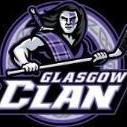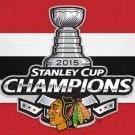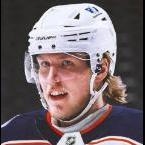-
Posts
1,925 -
Joined
-
Last visited
-
Days Won
5
Reputation Activity
-
 Matt_O reacted to solas in VHL Scoring Changes Throughout History
Matt_O reacted to solas in VHL Scoring Changes Throughout History
Great article, it's been really interesting to see the drop in scoring in the "portal era" with larger draft classes and more depth/parity. I wonder what some other great players (O'Malley, Rafter, McAllister?) might look like in the context of the first or ninth generations.
Plus with Campbell, I'd also note that he had the benefit of not just playing in a higher-scoring era but also starting his career in Season 1 where there wouldn't have been a gap to make up between him and other players in his rookie season. So he basically got to be the player with the most TPE in the league (or somewhere around there) his entire career, which is never going to happen again unless the league goes completely crazy.
-
 Matt_O reacted to Baozi in VHL Scoring Changes Throughout History
Matt_O reacted to Baozi in VHL Scoring Changes Throughout History
Damn this is good.
Too much depth is watering down scoring numbers! lol
-
 Matt_O got a reaction from Jubis in VHL Scoring Changes Throughout History
Matt_O got a reaction from Jubis in VHL Scoring Changes Throughout History
Scotty Campbell, very clearly, is the VHL’s greatest player of all time. No one even comes close. He is the only player to have a point total in the quadruple digits, as well as the only player to average over one goal per game through their entire career. He is the undisputed GOAT of the VHL. However, it’s impossible to deny he had some help. I have been tirelessly trying to find ways I can to prove that Campbell isn’t perhaps as great as everything thinks. I had a media spot a couple weeks ago accusing Campbell of being a playoff choker; this held true until I realized that his playoff career totals in his hall of fame article were completely incorrect. So, I naturally had to take things one step further.
We all know that the league has the most activity right now than ever before. There are more players in the league, double the amount of teams we once had, and we are not even ten seasons removed from the two largest draft classes in league history (S66+S67). In the modern VHL, there are more good players, less minutes to be played, and less opportunities to score, problems that Campbell did not ever have to face. The biggest difficulty that players face now is that when they enter the league, most players have more TPE than them at the start. Since Campbell started in S1, he didn’t have this problem. He was always the best player, throughout his whole career. It’s clearly harder as a player to produce points in the modern VHL than it was in the beginning, but how can we prove this? Unfortunately, the only true way to find out how scoring has changed throughout VHL history is to collect every single player's all time stats, and sort them accordingly. This is going to be fun, right?
I split up VHL history into nine generations. Each generation was 8 seasons, the maximum length of a player's career. Every player with 200+ games played is a part of this data. I collected the points, goals, assists, points per game, and games played for forwards and defense, as well as save percentage and goals against average for goaltenders.
Data
Firstly, we are going to look at forward stat changes throughout the years. In order to find this, I took the average games played, goals, assists, points, and points per game and put them on a graph over time, to show how scoring has increased or decreased throughout VHL history. Here is the graph:
Blue: Games played \ Yellow: Points \ Red: Assists \ Orange: Goals \ Green: PPG (multiplied by 100, so it would show up on the graph)
Just from a first look at this graph, we can tell that everything decreases over time. The only thing that doesn’t noticeably decrease is games played, which was actually steadily increasing until it hit a low in the ninth generation. It’s very clear to see the trend; as more time went on, scoring became less common. We see this especially towards the end of the graph, which is where the ninth and final generation take over. Goals, assists, points per game, and especially points all clearly decrease, especially points. It takes a nosedive. This is the trend that I was hoping to find. Despite the total number of games played staying pretty steady throughout all of VHL history, the point totals have all taken a very noticeable dip, in two distinct four season groups.
The first four generations all saw average point totals over the point per game mark, a testament to how offenses would dominate in the early years. However, that then dropped to around 0.92 points per game for four seasons, and would hover around that mark until the final generation where it dropped all the way to 0.7.
Despite games played staying pretty consistent throughout each generation, scoring takes a very noticeable decline. Let's look at stat changes for defensemen.
Blue: Games played \ Yellow: Points \ Red: Assists \ Orange: Goals \ Green: PPG (multiplied by 100, so it would show up on the graph)
For defensemen, the trends are a little different, but still tell the same story. Defensemen’s careers actually got longer as time went on, yet all their other stats continued to decrease. If you look at the start and end points of the graph, it looks pretty even. However, that doesn’t tell the full story. Point totals peaked at around the fourth generation, and then continued to decline even though games played continued to increase. In the ninth generation, games played increased by one of the most noticeable margins, yet all offensive stats went down at the same time.
The two distinct four generation groups strike again, similar to how it worked for the forwards. The first four generations saw point per game totals around .85, peaking at .91 in the third generation (S16-S23). From the fifth to the eight generation, points per game all hovered around 0.75, and then in the final generation it hit its lowest point, at 0.68 points per game.
The biggest difficulty with defenseman was sorting out which defenseman were forwards for a portion of their career. All of the point totals would go up artificially, so I had to fix some things. If a player played half his career as a forward and then the other half as a defenseman, I collected their season by season stats and put their offense stats with forwards and defense stats with the defenseman. The only players this affected was Matt Bailey and Keaton Louth, who both played exactly half of their careers as a forward and the other half as a defenseman.
For defensemen, you can look at this graph in two different ways. If you take the graph as a whole, you can clearly see that games played continue to increase, while the rest of the stats stay the same or slightly decrease. You also could look at the graph’s from the peak in points. The point totals go way down after the peak, even though games played increase. Now it’s time for goalies.
I decided to add trend lines for the goalie graphs, to make it slightly easier to look at. The data is a little choppy, going up and down, so the trendline helps make it easier to see how the stats change over time. Goals against averages decreased over time, while save percentage increased over time. GAA was at 3.11 in the beginning of the VHL, which reached a low of 2.03 in the seventh generation (S49-S56). It has gone up since then, but the average is still very clearly decreasing.
The graphs show that the GAA for goalies have decreased over time, but we can really put these numbers into context. Throughout VHL history, 104 goalies have played 150+ games, the minimum number of games to qualify for this list. When you rank them in terms of GAA, the best first generation (S1-S8) goaltender to appear on the list is Matt Pogge. He ranks 37th, with a GAA of 2.48. He is the only first generation goalie in the top half of the list. Perhaps even more amazingly, Pogge (hall of famer) and Adrian McCreath (hall of famer) are the only goaltenders from the first generation that aren’t in the bottom 25. Out of 14 first generation goaltenders, 12 of them are in the bottom 25. Compare this to the most recent generation (S65-S75), where only one goalie is ranked in the bottom 25. That goalie is Owen May, and it's almost not even fair to have him ranked in the bottom 25. In his five seasons as a starter, he spent four of them on expansion teams (Moscow and Prague), and then another season with the rebuilding Toronto Legion. Meanwhile, we have hall of fame goaltenders from the first generation ranked below May.
Save percentage is another trend that is clearly on the rise. In the first generation, the average save percentage wasn’t even above 0.91. Despite the decline in recent years, it still is clearly increasing, as shown by the trendline. When you rank all 104 goaltenders by save percentage, eight first generation goalies are in the bottom 25. However, we also see three goalies in the top 20. What does this mean? Does it mean that goalies in the first generation weren’t as bad as we think? Not necessarily.
The way I interpret it is that there were way more shots on net in the early days of the VHL. If the save percentages of the top goalies are holding up 75 seasons later, but their GAA’s are in the tank, it must mean that goalies were facing tons of shots per game. When we look through the all time stats, my claim holds up. Three first generation goaltenders appear in the top 10 for shots against. Dominick Stryker, Greg Goldberg and Anton Nygard are the three, and Nygard and Stryker are the two highest ranked first gen goalies by save percentage. Stryker is first in shots against, Nygard is sixth, and Goldberg is eighth. In fact, Stryker is over 2,000 shots ahead of second place despite playing 60 less games. Despite being ranked in the top 10 for shots against, Goldberg, Stryker, and Nygard own three of the four fewest games played totals in the entire top 25. Nygard only played 377 games and still sits 70 shots ahead of Norris Stopko, who played over 150 extra games than Nygard. Who is the goalie that also has one of the four fewest games played totals? Jonas Markstrom, a second generation goaltender. In the early days of the VHL, shooting was much higher than it is now, and that is reflected through goaltending stats.
Final analysis
So, what does all of this mean? Did I just spend hours combing through the all time VHL played and goaltending stats for nothing? That was a fear I had before I took on this project. What if I spent all this time researching, only to find that there is no trend at all? What if I found the opposite; that scoring is actually more common now? After a few hours worth of research, I luckily discovered that was not the case. Scoring has clearly gone down since the early VHL days, and it’s by a good margin. In the first four generations of VHL history (S1-S32), the average player scored at a rate above a point per game. Now, the average player doesn’t even score at a rate of 0.7 points per game. Shooting numbers have gone way down, while GAA’s have gone down and save percentage has gone up. But if you recall, the reason for doing this wasn’t to look at scoring trends throughout history. It all was about watering down Scotty Campbell’s success. How did he do it? He was so good, he was impossibly good. He played in the era with plumbers, players today are much stronger. It’s impossible to tell how a player from a different era would do in the modern game. This is true in real life sports, with real life players. It’s even more impossible to determine how older players would do in the modern era when they don’t even actually exist. However, I tried my best to do just that.
Julian Borwinn, the highest scoring player of the ninth generation. In 576 games, he had 325 goals, 380 assists, and 705 points. How can we compare him to Scotty Campbell? What I did might not be the best, most scientific way to go about things. In fact, it probably isn’t. But at the end of the day, I thought it was acceptable, so I went through with it.
I compared Scotty Campbell’s stats to that of an average first generation player, and then compared Borwinn’s numbers to the average ninth generation player. Campbell scored goals 3.2 times as often as the average player, and also dished out 2.5 times as many apples. Borwinn, on the other hand, scored 2.8 times as often as a ninth generation player, and had 2.3 times as many assists. I took those numbers, where we compared Borwinn and Campbell to average players from their eras, and then flipped it all around. I took Borwinns rates of scoring, 2.8 and 2.3, and applied it to the average first generation player, and then I took Campbells rates, 3.2 and 2.5, and applied it to the average ninth generation player. What are Campbell and Borwinn’s new stat lines? Is Campbell still the VHL goat?
Campbell, when adjusted for ninth generation scoring rates, had a career where he scored 372 goals, had 410 assists, and 782 points. Hall of fame worthy career? Absolutely. Greatest of all time? No way. But what about Borwinn? The reason Campbell is the GOAT is because of his sheer dominance, and if Borwinn can’t put up seriously elite numbers, it will simply prove Campbell is worthy of his GOAT status. So, what did Borwinn do? When compared to first generation scoring rates, Borwinn put up 524 goals, 593 assists, for a whopping 1117 points. It isn’t the same as what Campbell put up, but it still is an incredible total and would make Borwinn only the second player to ever reach 1000 points. This study doesn’t even take into account the change in shooting numbers. Campbell took over 1500 more shots than Borwinn in the same amount of games. If Borwinn shot the puck as much as Campbell, perhaps his adjusted numbers would be even better than Campbells.
So, after a ton of research and lots of writing, what conclusions can we draw from this? Firstly, Campbell is still the GOAT. Even though he played in an era where it was much easier to score, he still dominated at an unprecedented level. However, it also shows us why many of his records are considered unbreakable. No one will ever reach his point total, or even come close, just because it’s much harder to score in the modern VHL. Scotty Campbell will always be the GOAT of the VHL, but it’s impossible to deny he had a much easier time scoring than any current players would.
2378 words
-
 Matt_O got a reaction from Spence King in VHL Scoring Changes Throughout History
Matt_O got a reaction from Spence King in VHL Scoring Changes Throughout History
Scotty Campbell, very clearly, is the VHL’s greatest player of all time. No one even comes close. He is the only player to have a point total in the quadruple digits, as well as the only player to average over one goal per game through their entire career. He is the undisputed GOAT of the VHL. However, it’s impossible to deny he had some help. I have been tirelessly trying to find ways I can to prove that Campbell isn’t perhaps as great as everything thinks. I had a media spot a couple weeks ago accusing Campbell of being a playoff choker; this held true until I realized that his playoff career totals in his hall of fame article were completely incorrect. So, I naturally had to take things one step further.
We all know that the league has the most activity right now than ever before. There are more players in the league, double the amount of teams we once had, and we are not even ten seasons removed from the two largest draft classes in league history (S66+S67). In the modern VHL, there are more good players, less minutes to be played, and less opportunities to score, problems that Campbell did not ever have to face. The biggest difficulty that players face now is that when they enter the league, most players have more TPE than them at the start. Since Campbell started in S1, he didn’t have this problem. He was always the best player, throughout his whole career. It’s clearly harder as a player to produce points in the modern VHL than it was in the beginning, but how can we prove this? Unfortunately, the only true way to find out how scoring has changed throughout VHL history is to collect every single player's all time stats, and sort them accordingly. This is going to be fun, right?
I split up VHL history into nine generations. Each generation was 8 seasons, the maximum length of a player's career. Every player with 200+ games played is a part of this data. I collected the points, goals, assists, points per game, and games played for forwards and defense, as well as save percentage and goals against average for goaltenders.
Data
Firstly, we are going to look at forward stat changes throughout the years. In order to find this, I took the average games played, goals, assists, points, and points per game and put them on a graph over time, to show how scoring has increased or decreased throughout VHL history. Here is the graph:
Blue: Games played \ Yellow: Points \ Red: Assists \ Orange: Goals \ Green: PPG (multiplied by 100, so it would show up on the graph)
Just from a first look at this graph, we can tell that everything decreases over time. The only thing that doesn’t noticeably decrease is games played, which was actually steadily increasing until it hit a low in the ninth generation. It’s very clear to see the trend; as more time went on, scoring became less common. We see this especially towards the end of the graph, which is where the ninth and final generation take over. Goals, assists, points per game, and especially points all clearly decrease, especially points. It takes a nosedive. This is the trend that I was hoping to find. Despite the total number of games played staying pretty steady throughout all of VHL history, the point totals have all taken a very noticeable dip, in two distinct four season groups.
The first four generations all saw average point totals over the point per game mark, a testament to how offenses would dominate in the early years. However, that then dropped to around 0.92 points per game for four seasons, and would hover around that mark until the final generation where it dropped all the way to 0.7.
Despite games played staying pretty consistent throughout each generation, scoring takes a very noticeable decline. Let's look at stat changes for defensemen.
Blue: Games played \ Yellow: Points \ Red: Assists \ Orange: Goals \ Green: PPG (multiplied by 100, so it would show up on the graph)
For defensemen, the trends are a little different, but still tell the same story. Defensemen’s careers actually got longer as time went on, yet all their other stats continued to decrease. If you look at the start and end points of the graph, it looks pretty even. However, that doesn’t tell the full story. Point totals peaked at around the fourth generation, and then continued to decline even though games played continued to increase. In the ninth generation, games played increased by one of the most noticeable margins, yet all offensive stats went down at the same time.
The two distinct four generation groups strike again, similar to how it worked for the forwards. The first four generations saw point per game totals around .85, peaking at .91 in the third generation (S16-S23). From the fifth to the eight generation, points per game all hovered around 0.75, and then in the final generation it hit its lowest point, at 0.68 points per game.
The biggest difficulty with defenseman was sorting out which defenseman were forwards for a portion of their career. All of the point totals would go up artificially, so I had to fix some things. If a player played half his career as a forward and then the other half as a defenseman, I collected their season by season stats and put their offense stats with forwards and defense stats with the defenseman. The only players this affected was Matt Bailey and Keaton Louth, who both played exactly half of their careers as a forward and the other half as a defenseman.
For defensemen, you can look at this graph in two different ways. If you take the graph as a whole, you can clearly see that games played continue to increase, while the rest of the stats stay the same or slightly decrease. You also could look at the graph’s from the peak in points. The point totals go way down after the peak, even though games played increase. Now it’s time for goalies.
I decided to add trend lines for the goalie graphs, to make it slightly easier to look at. The data is a little choppy, going up and down, so the trendline helps make it easier to see how the stats change over time. Goals against averages decreased over time, while save percentage increased over time. GAA was at 3.11 in the beginning of the VHL, which reached a low of 2.03 in the seventh generation (S49-S56). It has gone up since then, but the average is still very clearly decreasing.
The graphs show that the GAA for goalies have decreased over time, but we can really put these numbers into context. Throughout VHL history, 104 goalies have played 150+ games, the minimum number of games to qualify for this list. When you rank them in terms of GAA, the best first generation (S1-S8) goaltender to appear on the list is Matt Pogge. He ranks 37th, with a GAA of 2.48. He is the only first generation goalie in the top half of the list. Perhaps even more amazingly, Pogge (hall of famer) and Adrian McCreath (hall of famer) are the only goaltenders from the first generation that aren’t in the bottom 25. Out of 14 first generation goaltenders, 12 of them are in the bottom 25. Compare this to the most recent generation (S65-S75), where only one goalie is ranked in the bottom 25. That goalie is Owen May, and it's almost not even fair to have him ranked in the bottom 25. In his five seasons as a starter, he spent four of them on expansion teams (Moscow and Prague), and then another season with the rebuilding Toronto Legion. Meanwhile, we have hall of fame goaltenders from the first generation ranked below May.
Save percentage is another trend that is clearly on the rise. In the first generation, the average save percentage wasn’t even above 0.91. Despite the decline in recent years, it still is clearly increasing, as shown by the trendline. When you rank all 104 goaltenders by save percentage, eight first generation goalies are in the bottom 25. However, we also see three goalies in the top 20. What does this mean? Does it mean that goalies in the first generation weren’t as bad as we think? Not necessarily.
The way I interpret it is that there were way more shots on net in the early days of the VHL. If the save percentages of the top goalies are holding up 75 seasons later, but their GAA’s are in the tank, it must mean that goalies were facing tons of shots per game. When we look through the all time stats, my claim holds up. Three first generation goaltenders appear in the top 10 for shots against. Dominick Stryker, Greg Goldberg and Anton Nygard are the three, and Nygard and Stryker are the two highest ranked first gen goalies by save percentage. Stryker is first in shots against, Nygard is sixth, and Goldberg is eighth. In fact, Stryker is over 2,000 shots ahead of second place despite playing 60 less games. Despite being ranked in the top 10 for shots against, Goldberg, Stryker, and Nygard own three of the four fewest games played totals in the entire top 25. Nygard only played 377 games and still sits 70 shots ahead of Norris Stopko, who played over 150 extra games than Nygard. Who is the goalie that also has one of the four fewest games played totals? Jonas Markstrom, a second generation goaltender. In the early days of the VHL, shooting was much higher than it is now, and that is reflected through goaltending stats.
Final analysis
So, what does all of this mean? Did I just spend hours combing through the all time VHL played and goaltending stats for nothing? That was a fear I had before I took on this project. What if I spent all this time researching, only to find that there is no trend at all? What if I found the opposite; that scoring is actually more common now? After a few hours worth of research, I luckily discovered that was not the case. Scoring has clearly gone down since the early VHL days, and it’s by a good margin. In the first four generations of VHL history (S1-S32), the average player scored at a rate above a point per game. Now, the average player doesn’t even score at a rate of 0.7 points per game. Shooting numbers have gone way down, while GAA’s have gone down and save percentage has gone up. But if you recall, the reason for doing this wasn’t to look at scoring trends throughout history. It all was about watering down Scotty Campbell’s success. How did he do it? He was so good, he was impossibly good. He played in the era with plumbers, players today are much stronger. It’s impossible to tell how a player from a different era would do in the modern game. This is true in real life sports, with real life players. It’s even more impossible to determine how older players would do in the modern era when they don’t even actually exist. However, I tried my best to do just that.
Julian Borwinn, the highest scoring player of the ninth generation. In 576 games, he had 325 goals, 380 assists, and 705 points. How can we compare him to Scotty Campbell? What I did might not be the best, most scientific way to go about things. In fact, it probably isn’t. But at the end of the day, I thought it was acceptable, so I went through with it.
I compared Scotty Campbell’s stats to that of an average first generation player, and then compared Borwinn’s numbers to the average ninth generation player. Campbell scored goals 3.2 times as often as the average player, and also dished out 2.5 times as many apples. Borwinn, on the other hand, scored 2.8 times as often as a ninth generation player, and had 2.3 times as many assists. I took those numbers, where we compared Borwinn and Campbell to average players from their eras, and then flipped it all around. I took Borwinns rates of scoring, 2.8 and 2.3, and applied it to the average first generation player, and then I took Campbells rates, 3.2 and 2.5, and applied it to the average ninth generation player. What are Campbell and Borwinn’s new stat lines? Is Campbell still the VHL goat?
Campbell, when adjusted for ninth generation scoring rates, had a career where he scored 372 goals, had 410 assists, and 782 points. Hall of fame worthy career? Absolutely. Greatest of all time? No way. But what about Borwinn? The reason Campbell is the GOAT is because of his sheer dominance, and if Borwinn can’t put up seriously elite numbers, it will simply prove Campbell is worthy of his GOAT status. So, what did Borwinn do? When compared to first generation scoring rates, Borwinn put up 524 goals, 593 assists, for a whopping 1117 points. It isn’t the same as what Campbell put up, but it still is an incredible total and would make Borwinn only the second player to ever reach 1000 points. This study doesn’t even take into account the change in shooting numbers. Campbell took over 1500 more shots than Borwinn in the same amount of games. If Borwinn shot the puck as much as Campbell, perhaps his adjusted numbers would be even better than Campbells.
So, after a ton of research and lots of writing, what conclusions can we draw from this? Firstly, Campbell is still the GOAT. Even though he played in an era where it was much easier to score, he still dominated at an unprecedented level. However, it also shows us why many of his records are considered unbreakable. No one will ever reach his point total, or even come close, just because it’s much harder to score in the modern VHL. Scotty Campbell will always be the GOAT of the VHL, but it’s impossible to deny he had a much easier time scoring than any current players would.
2378 words
-
 Matt_O got a reaction from Hoopydog in VHL Scoring Changes Throughout History
Matt_O got a reaction from Hoopydog in VHL Scoring Changes Throughout History
Scotty Campbell, very clearly, is the VHL’s greatest player of all time. No one even comes close. He is the only player to have a point total in the quadruple digits, as well as the only player to average over one goal per game through their entire career. He is the undisputed GOAT of the VHL. However, it’s impossible to deny he had some help. I have been tirelessly trying to find ways I can to prove that Campbell isn’t perhaps as great as everything thinks. I had a media spot a couple weeks ago accusing Campbell of being a playoff choker; this held true until I realized that his playoff career totals in his hall of fame article were completely incorrect. So, I naturally had to take things one step further.
We all know that the league has the most activity right now than ever before. There are more players in the league, double the amount of teams we once had, and we are not even ten seasons removed from the two largest draft classes in league history (S66+S67). In the modern VHL, there are more good players, less minutes to be played, and less opportunities to score, problems that Campbell did not ever have to face. The biggest difficulty that players face now is that when they enter the league, most players have more TPE than them at the start. Since Campbell started in S1, he didn’t have this problem. He was always the best player, throughout his whole career. It’s clearly harder as a player to produce points in the modern VHL than it was in the beginning, but how can we prove this? Unfortunately, the only true way to find out how scoring has changed throughout VHL history is to collect every single player's all time stats, and sort them accordingly. This is going to be fun, right?
I split up VHL history into nine generations. Each generation was 8 seasons, the maximum length of a player's career. Every player with 200+ games played is a part of this data. I collected the points, goals, assists, points per game, and games played for forwards and defense, as well as save percentage and goals against average for goaltenders.
Data
Firstly, we are going to look at forward stat changes throughout the years. In order to find this, I took the average games played, goals, assists, points, and points per game and put them on a graph over time, to show how scoring has increased or decreased throughout VHL history. Here is the graph:
Blue: Games played \ Yellow: Points \ Red: Assists \ Orange: Goals \ Green: PPG (multiplied by 100, so it would show up on the graph)
Just from a first look at this graph, we can tell that everything decreases over time. The only thing that doesn’t noticeably decrease is games played, which was actually steadily increasing until it hit a low in the ninth generation. It’s very clear to see the trend; as more time went on, scoring became less common. We see this especially towards the end of the graph, which is where the ninth and final generation take over. Goals, assists, points per game, and especially points all clearly decrease, especially points. It takes a nosedive. This is the trend that I was hoping to find. Despite the total number of games played staying pretty steady throughout all of VHL history, the point totals have all taken a very noticeable dip, in two distinct four season groups.
The first four generations all saw average point totals over the point per game mark, a testament to how offenses would dominate in the early years. However, that then dropped to around 0.92 points per game for four seasons, and would hover around that mark until the final generation where it dropped all the way to 0.7.
Despite games played staying pretty consistent throughout each generation, scoring takes a very noticeable decline. Let's look at stat changes for defensemen.
Blue: Games played \ Yellow: Points \ Red: Assists \ Orange: Goals \ Green: PPG (multiplied by 100, so it would show up on the graph)
For defensemen, the trends are a little different, but still tell the same story. Defensemen’s careers actually got longer as time went on, yet all their other stats continued to decrease. If you look at the start and end points of the graph, it looks pretty even. However, that doesn’t tell the full story. Point totals peaked at around the fourth generation, and then continued to decline even though games played continued to increase. In the ninth generation, games played increased by one of the most noticeable margins, yet all offensive stats went down at the same time.
The two distinct four generation groups strike again, similar to how it worked for the forwards. The first four generations saw point per game totals around .85, peaking at .91 in the third generation (S16-S23). From the fifth to the eight generation, points per game all hovered around 0.75, and then in the final generation it hit its lowest point, at 0.68 points per game.
The biggest difficulty with defenseman was sorting out which defenseman were forwards for a portion of their career. All of the point totals would go up artificially, so I had to fix some things. If a player played half his career as a forward and then the other half as a defenseman, I collected their season by season stats and put their offense stats with forwards and defense stats with the defenseman. The only players this affected was Matt Bailey and Keaton Louth, who both played exactly half of their careers as a forward and the other half as a defenseman.
For defensemen, you can look at this graph in two different ways. If you take the graph as a whole, you can clearly see that games played continue to increase, while the rest of the stats stay the same or slightly decrease. You also could look at the graph’s from the peak in points. The point totals go way down after the peak, even though games played increase. Now it’s time for goalies.
I decided to add trend lines for the goalie graphs, to make it slightly easier to look at. The data is a little choppy, going up and down, so the trendline helps make it easier to see how the stats change over time. Goals against averages decreased over time, while save percentage increased over time. GAA was at 3.11 in the beginning of the VHL, which reached a low of 2.03 in the seventh generation (S49-S56). It has gone up since then, but the average is still very clearly decreasing.
The graphs show that the GAA for goalies have decreased over time, but we can really put these numbers into context. Throughout VHL history, 104 goalies have played 150+ games, the minimum number of games to qualify for this list. When you rank them in terms of GAA, the best first generation (S1-S8) goaltender to appear on the list is Matt Pogge. He ranks 37th, with a GAA of 2.48. He is the only first generation goalie in the top half of the list. Perhaps even more amazingly, Pogge (hall of famer) and Adrian McCreath (hall of famer) are the only goaltenders from the first generation that aren’t in the bottom 25. Out of 14 first generation goaltenders, 12 of them are in the bottom 25. Compare this to the most recent generation (S65-S75), where only one goalie is ranked in the bottom 25. That goalie is Owen May, and it's almost not even fair to have him ranked in the bottom 25. In his five seasons as a starter, he spent four of them on expansion teams (Moscow and Prague), and then another season with the rebuilding Toronto Legion. Meanwhile, we have hall of fame goaltenders from the first generation ranked below May.
Save percentage is another trend that is clearly on the rise. In the first generation, the average save percentage wasn’t even above 0.91. Despite the decline in recent years, it still is clearly increasing, as shown by the trendline. When you rank all 104 goaltenders by save percentage, eight first generation goalies are in the bottom 25. However, we also see three goalies in the top 20. What does this mean? Does it mean that goalies in the first generation weren’t as bad as we think? Not necessarily.
The way I interpret it is that there were way more shots on net in the early days of the VHL. If the save percentages of the top goalies are holding up 75 seasons later, but their GAA’s are in the tank, it must mean that goalies were facing tons of shots per game. When we look through the all time stats, my claim holds up. Three first generation goaltenders appear in the top 10 for shots against. Dominick Stryker, Greg Goldberg and Anton Nygard are the three, and Nygard and Stryker are the two highest ranked first gen goalies by save percentage. Stryker is first in shots against, Nygard is sixth, and Goldberg is eighth. In fact, Stryker is over 2,000 shots ahead of second place despite playing 60 less games. Despite being ranked in the top 10 for shots against, Goldberg, Stryker, and Nygard own three of the four fewest games played totals in the entire top 25. Nygard only played 377 games and still sits 70 shots ahead of Norris Stopko, who played over 150 extra games than Nygard. Who is the goalie that also has one of the four fewest games played totals? Jonas Markstrom, a second generation goaltender. In the early days of the VHL, shooting was much higher than it is now, and that is reflected through goaltending stats.
Final analysis
So, what does all of this mean? Did I just spend hours combing through the all time VHL played and goaltending stats for nothing? That was a fear I had before I took on this project. What if I spent all this time researching, only to find that there is no trend at all? What if I found the opposite; that scoring is actually more common now? After a few hours worth of research, I luckily discovered that was not the case. Scoring has clearly gone down since the early VHL days, and it’s by a good margin. In the first four generations of VHL history (S1-S32), the average player scored at a rate above a point per game. Now, the average player doesn’t even score at a rate of 0.7 points per game. Shooting numbers have gone way down, while GAA’s have gone down and save percentage has gone up. But if you recall, the reason for doing this wasn’t to look at scoring trends throughout history. It all was about watering down Scotty Campbell’s success. How did he do it? He was so good, he was impossibly good. He played in the era with plumbers, players today are much stronger. It’s impossible to tell how a player from a different era would do in the modern game. This is true in real life sports, with real life players. It’s even more impossible to determine how older players would do in the modern era when they don’t even actually exist. However, I tried my best to do just that.
Julian Borwinn, the highest scoring player of the ninth generation. In 576 games, he had 325 goals, 380 assists, and 705 points. How can we compare him to Scotty Campbell? What I did might not be the best, most scientific way to go about things. In fact, it probably isn’t. But at the end of the day, I thought it was acceptable, so I went through with it.
I compared Scotty Campbell’s stats to that of an average first generation player, and then compared Borwinn’s numbers to the average ninth generation player. Campbell scored goals 3.2 times as often as the average player, and also dished out 2.5 times as many apples. Borwinn, on the other hand, scored 2.8 times as often as a ninth generation player, and had 2.3 times as many assists. I took those numbers, where we compared Borwinn and Campbell to average players from their eras, and then flipped it all around. I took Borwinns rates of scoring, 2.8 and 2.3, and applied it to the average first generation player, and then I took Campbells rates, 3.2 and 2.5, and applied it to the average ninth generation player. What are Campbell and Borwinn’s new stat lines? Is Campbell still the VHL goat?
Campbell, when adjusted for ninth generation scoring rates, had a career where he scored 372 goals, had 410 assists, and 782 points. Hall of fame worthy career? Absolutely. Greatest of all time? No way. But what about Borwinn? The reason Campbell is the GOAT is because of his sheer dominance, and if Borwinn can’t put up seriously elite numbers, it will simply prove Campbell is worthy of his GOAT status. So, what did Borwinn do? When compared to first generation scoring rates, Borwinn put up 524 goals, 593 assists, for a whopping 1117 points. It isn’t the same as what Campbell put up, but it still is an incredible total and would make Borwinn only the second player to ever reach 1000 points. This study doesn’t even take into account the change in shooting numbers. Campbell took over 1500 more shots than Borwinn in the same amount of games. If Borwinn shot the puck as much as Campbell, perhaps his adjusted numbers would be even better than Campbells.
So, after a ton of research and lots of writing, what conclusions can we draw from this? Firstly, Campbell is still the GOAT. Even though he played in an era where it was much easier to score, he still dominated at an unprecedented level. However, it also shows us why many of his records are considered unbreakable. No one will ever reach his point total, or even come close, just because it’s much harder to score in the modern VHL. Scotty Campbell will always be the GOAT of the VHL, but it’s impossible to deny he had a much easier time scoring than any current players would.
2378 words
-
 Matt_O reacted to Victor in VHL Scoring Changes Throughout History
Matt_O reacted to Victor in VHL Scoring Changes Throughout History
Damn that points nosedive.
And the Clegane-fuelled GAA drop 🕶️
-

-
 Matt_O got a reaction from fonziGG in Malmo wins the cup
Matt_O got a reaction from fonziGG in Malmo wins the cup
The Nighthawks are the S75 champs, for the first time in their franchise history. I wish it could have been Calgary, but if it was anyone else, I am glad that it's Malmo. They will always be one of my favorite teams. I played most of my first players career with Malmo, after getting taken in the expansion draft. I was surprised to be taken, and at first I was sad. But I very quickly was happy with the new opportunity to play for Malmo. We had a really great group of guys, with @GustavMattias and @fonziGG leading the way. This team has come a really long way since our S68 run, with Matt Thompson, Ryan Sullivan Jr., and Phil Marleau. The locker room was great, the best environment I have ever been in so far and that probably won't ever change. It is really great to see this team finally get a well deserved cup. I can't believe that Malmo has been around for nearly ten seasons, it's hard to believe sometimes that my time in Malmo was fairly long ago. Malmo will always be one of my favorite teams.
-

-
 Matt_O got a reaction from Viper in Malmo wins the cup
Matt_O got a reaction from Viper in Malmo wins the cup
The Nighthawks are the S75 champs, for the first time in their franchise history. I wish it could have been Calgary, but if it was anyone else, I am glad that it's Malmo. They will always be one of my favorite teams. I played most of my first players career with Malmo, after getting taken in the expansion draft. I was surprised to be taken, and at first I was sad. But I very quickly was happy with the new opportunity to play for Malmo. We had a really great group of guys, with @GustavMattias and @fonziGG leading the way. This team has come a really long way since our S68 run, with Matt Thompson, Ryan Sullivan Jr., and Phil Marleau. The locker room was great, the best environment I have ever been in so far and that probably won't ever change. It is really great to see this team finally get a well deserved cup. I can't believe that Malmo has been around for nearly ten seasons, it's hard to believe sometimes that my time in Malmo was fairly long ago. Malmo will always be one of my favorite teams.
-
 Matt_O got a reaction from OrbitingDeath in Malmo wins the cup
Matt_O got a reaction from OrbitingDeath in Malmo wins the cup
The Nighthawks are the S75 champs, for the first time in their franchise history. I wish it could have been Calgary, but if it was anyone else, I am glad that it's Malmo. They will always be one of my favorite teams. I played most of my first players career with Malmo, after getting taken in the expansion draft. I was surprised to be taken, and at first I was sad. But I very quickly was happy with the new opportunity to play for Malmo. We had a really great group of guys, with @GustavMattias and @fonziGG leading the way. This team has come a really long way since our S68 run, with Matt Thompson, Ryan Sullivan Jr., and Phil Marleau. The locker room was great, the best environment I have ever been in so far and that probably won't ever change. It is really great to see this team finally get a well deserved cup. I can't believe that Malmo has been around for nearly ten seasons, it's hard to believe sometimes that my time in Malmo was fairly long ago. Malmo will always be one of my favorite teams.
-
 Matt_O got a reaction from diacope in Scotty Campbell EXPOSED
Matt_O got a reaction from diacope in Scotty Campbell EXPOSED
I was looking around the HOF today, specifically at Campbell, since I wanted to write a media spot about him and talking about what made him so great. This is when I noticed something very strange, so I abandoned my plans to talk about his greatness, but rather his playoff success. Based purely on the stats, Scotty Campbell is a playoff choker. How can the VHL's goat be a choker? Lets look at some of the stats:
In 577 regular season games, he had 1239 points, or 2.15 points per game. In 41 playoff games, he had 65 points, only 1.59 points per game. That's still a really good number, but it's a huge fall of from his regular season stats. He also took penalties far more often in the postseason, with 60 penalty minutes in 41 playoff games (1.46 minutes per game), compared to 306 penalty minutes in 577 regular season games 9 (0.53 minutes per game). In the plus minus department, he was a +643 in 577 games, but he was even through 41 playoff games. Perhaps the most alarming stat that proves Campbell doesn't have the mamba mentality is the difference in his game winning goals. In the regular season, he had 101 game winning goals. In 18% of the games he played, he scored the game winning goal. 17% of all his goals were game winners. In the playoffs, he had only 2 game winners. That's only 5% of the games he played where he scored the winner, and 6% of all the goals he scored.
Based on all the stats, it is clear as day that Scotty Campbell was a choker. However, upon closer inspection, things aren't as clear cut as it seems. As I scrolled through Campbell's hall of fame article, I noticed some discrepancies in the playoff stats. The career playoff totals for Campbell are completely wrong. Here is what it says are his career playoff totals:
Playoffs 41GP / 32G / 33A / 65P / E / 60PIM / 40H / 294S / 22SB / 2GWG Here is what his stats actually should look like:
Playoffs 72GP / 57G / 73A / 130P / +32 / 50PIM / 18H / 531S / 45SB / 8GWG While his playoff stats still aren't up to par with his regular season dominance, it is much better than his career playoff stats shown in the hall of fame. I have no idea how this happened, the numbers aren't even close at all, in fact some totals doubled, and his game winning goals quadrupled. At first glance, it may have seemed like Campbell was a bit of a choker, but the career stats shown in the hall of fame are simply incorrect. Campbell also has 3 cups, so he clearly isn't a choker by any stretch of the imagination. Instead of exposing Scotty Campbell, which I sought out to do, I ended up exposing the VHL for not being able to get the correct playoff statistics for their greatest player of all time. His regular season stats were correct, at least his point total was (I assumed everything else was correct as well) I did a little bit more searching around, and I couldn't find any other older player that had their stats incorrect. How did this even happen?
535 words
-
 Matt_O got a reaction from ThePerfectNut in Scotty Campbell EXPOSED
Matt_O got a reaction from ThePerfectNut in Scotty Campbell EXPOSED
I was looking around the HOF today, specifically at Campbell, since I wanted to write a media spot about him and talking about what made him so great. This is when I noticed something very strange, so I abandoned my plans to talk about his greatness, but rather his playoff success. Based purely on the stats, Scotty Campbell is a playoff choker. How can the VHL's goat be a choker? Lets look at some of the stats:
In 577 regular season games, he had 1239 points, or 2.15 points per game. In 41 playoff games, he had 65 points, only 1.59 points per game. That's still a really good number, but it's a huge fall of from his regular season stats. He also took penalties far more often in the postseason, with 60 penalty minutes in 41 playoff games (1.46 minutes per game), compared to 306 penalty minutes in 577 regular season games 9 (0.53 minutes per game). In the plus minus department, he was a +643 in 577 games, but he was even through 41 playoff games. Perhaps the most alarming stat that proves Campbell doesn't have the mamba mentality is the difference in his game winning goals. In the regular season, he had 101 game winning goals. In 18% of the games he played, he scored the game winning goal. 17% of all his goals were game winners. In the playoffs, he had only 2 game winners. That's only 5% of the games he played where he scored the winner, and 6% of all the goals he scored.
Based on all the stats, it is clear as day that Scotty Campbell was a choker. However, upon closer inspection, things aren't as clear cut as it seems. As I scrolled through Campbell's hall of fame article, I noticed some discrepancies in the playoff stats. The career playoff totals for Campbell are completely wrong. Here is what it says are his career playoff totals:
Playoffs 41GP / 32G / 33A / 65P / E / 60PIM / 40H / 294S / 22SB / 2GWG Here is what his stats actually should look like:
Playoffs 72GP / 57G / 73A / 130P / +32 / 50PIM / 18H / 531S / 45SB / 8GWG While his playoff stats still aren't up to par with his regular season dominance, it is much better than his career playoff stats shown in the hall of fame. I have no idea how this happened, the numbers aren't even close at all, in fact some totals doubled, and his game winning goals quadrupled. At first glance, it may have seemed like Campbell was a bit of a choker, but the career stats shown in the hall of fame are simply incorrect. Campbell also has 3 cups, so he clearly isn't a choker by any stretch of the imagination. Instead of exposing Scotty Campbell, which I sought out to do, I ended up exposing the VHL for not being able to get the correct playoff statistics for their greatest player of all time. His regular season stats were correct, at least his point total was (I assumed everything else was correct as well) I did a little bit more searching around, and I couldn't find any other older player that had their stats incorrect. How did this even happen?
535 words
-
 Matt_O got a reaction from a_Ferk in Scotty Campbell EXPOSED
Matt_O got a reaction from a_Ferk in Scotty Campbell EXPOSED
I was looking around the HOF today, specifically at Campbell, since I wanted to write a media spot about him and talking about what made him so great. This is when I noticed something very strange, so I abandoned my plans to talk about his greatness, but rather his playoff success. Based purely on the stats, Scotty Campbell is a playoff choker. How can the VHL's goat be a choker? Lets look at some of the stats:
In 577 regular season games, he had 1239 points, or 2.15 points per game. In 41 playoff games, he had 65 points, only 1.59 points per game. That's still a really good number, but it's a huge fall of from his regular season stats. He also took penalties far more often in the postseason, with 60 penalty minutes in 41 playoff games (1.46 minutes per game), compared to 306 penalty minutes in 577 regular season games 9 (0.53 minutes per game). In the plus minus department, he was a +643 in 577 games, but he was even through 41 playoff games. Perhaps the most alarming stat that proves Campbell doesn't have the mamba mentality is the difference in his game winning goals. In the regular season, he had 101 game winning goals. In 18% of the games he played, he scored the game winning goal. 17% of all his goals were game winners. In the playoffs, he had only 2 game winners. That's only 5% of the games he played where he scored the winner, and 6% of all the goals he scored.
Based on all the stats, it is clear as day that Scotty Campbell was a choker. However, upon closer inspection, things aren't as clear cut as it seems. As I scrolled through Campbell's hall of fame article, I noticed some discrepancies in the playoff stats. The career playoff totals for Campbell are completely wrong. Here is what it says are his career playoff totals:
Playoffs 41GP / 32G / 33A / 65P / E / 60PIM / 40H / 294S / 22SB / 2GWG Here is what his stats actually should look like:
Playoffs 72GP / 57G / 73A / 130P / +32 / 50PIM / 18H / 531S / 45SB / 8GWG While his playoff stats still aren't up to par with his regular season dominance, it is much better than his career playoff stats shown in the hall of fame. I have no idea how this happened, the numbers aren't even close at all, in fact some totals doubled, and his game winning goals quadrupled. At first glance, it may have seemed like Campbell was a bit of a choker, but the career stats shown in the hall of fame are simply incorrect. Campbell also has 3 cups, so he clearly isn't a choker by any stretch of the imagination. Instead of exposing Scotty Campbell, which I sought out to do, I ended up exposing the VHL for not being able to get the correct playoff statistics for their greatest player of all time. His regular season stats were correct, at least his point total was (I assumed everything else was correct as well) I did a little bit more searching around, and I couldn't find any other older player that had their stats incorrect. How did this even happen?
535 words
-
 Matt_O reacted to Laine in The Victory ProAM Tournament: What it is and why YOU should get involved!
Matt_O reacted to Laine in The Victory ProAM Tournament: What it is and why YOU should get involved!
The VHL as a whole tends to slow down during the offseason. The VHL and M drafts along with Free Agency provide some activity but it doesn't usually hold up the entire offseason, leading to quite a bit of inactivity until training camps commence. In the past, many members have tried to keep active during the offseason but nothing seems to stick. Myself, in partnership with @Zetterberg and @MexicanCow123 have come up with not only a solution to the offseason inactivity but also something that benefits the league as a whole: The Victory ProAM Tournament!
What is the Victory ProAM Tournament?
The Victory ProAM Tournament is a tournament put on by Myself, @Zetterberg and @MexicanCow123 during the offseason. Users can join by checking out the recruitment drive during the playoffs.
How does the Victory ProAM Tournament work?
The amount of teams will vary, but the overall structure stays the same. Different teams will be picked every offseason, with different GMs and AGMs at the helm every go around as well. To benefit newer players, we always try to make the GMs newer users or users with no GMing experience, not only to help teach them but to also give them the vital experience they need. Each GM is allowed to appoint one AGM for the entire tournament. Extra help will be available to the GMs besides their AGM, as many players alike help GMs when help is needed. GMs are allowed to name their own team, with names also changing every offseason.
The team building process begins once GMs are selected. A draft lottery is conducted to determine in which order GMs will pick throughout the draft. The draft board is put up with players going off as they are selected. The draft is in a snake order. Each GM must select 6 forwards, 4 defensemen and 2 goalies to complete their team. Skaters CAN be moved around to various positions, although we prefer you draft based on natural position (Ex: a forward can be moved to defense if needed). Once teams are selected the sim schedule will be uploaded with sims starting one or two days after the final playoff game is played.
Why should I care about the Victory ProAM Tournament?
There are many reasons to join the tournament. First and foremost, it helps cure the boredom that ensues during your standard VHL offseason. It also gives newer and older members a chance to make friends and communicate with one another. Last offseason, we saw many friendships come as a result of this tournament. Lastly, it helps give younger players experience with opportunities in GMing. It also benefits older players who can pass their skills down to young members.
Our S75 Offseason recruitment drive will launch NEXT WEEK! We have also started formal recruitment in many VHL and VHLM lounge rooms, so keep your eyes peeled for that. If you want an invite for the discord server but don't see the thread or any invites in LRs, feel free to contact myself, Z, Cow or any of the other members inside the discord server (there is a lot of us). Until next time.
(525 words)
-
 Matt_O got a reaction from McWolf in Tag Someone On VHL Who Did Something Nice For You
Matt_O got a reaction from McWolf in Tag Someone On VHL Who Did Something Nice For You
@Nykonax for helping me with my To Kill a Mockingbird english homework last year
-
 Matt_O got a reaction from gorlab in Tag Someone On VHL Who Did Something Nice For You
Matt_O got a reaction from gorlab in Tag Someone On VHL Who Did Something Nice For You
@Nykonax for helping me with my To Kill a Mockingbird english homework last year
-
 Matt_O got a reaction from fyrefly in Tag Someone On VHL Who Did Something Nice For You
Matt_O got a reaction from fyrefly in Tag Someone On VHL Who Did Something Nice For You
@Nykonax for helping me with my To Kill a Mockingbird english homework last year
-
 Matt_O got a reaction from Laine in Tag Someone On VHL Who Did Something Nice For You
Matt_O got a reaction from Laine in Tag Someone On VHL Who Did Something Nice For You
@Nykonax for helping me with my To Kill a Mockingbird english homework last year
-
 Matt_O got a reaction from bigAL in Tag Someone On VHL Who Did Something Nice For You
Matt_O got a reaction from bigAL in Tag Someone On VHL Who Did Something Nice For You
@Nykonax for helping me with my To Kill a Mockingbird english homework last year
-
 Matt_O reacted to Nykonax in Tag Someone On VHL Who Did Something Nice For You
Matt_O reacted to Nykonax in Tag Someone On VHL Who Did Something Nice For You
i dont even remember this
-
 Matt_O got a reaction from Nykonax in Tag Someone On VHL Who Did Something Nice For You
Matt_O got a reaction from Nykonax in Tag Someone On VHL Who Did Something Nice For You
@Nykonax for helping me with my To Kill a Mockingbird english homework last year
-
 Matt_O reacted to fishy in the paper is done!!!!!!!
Matt_O reacted to fishy in the paper is done!!!!!!!
it's done it's done it's done it's done it's done it's done
Thanks to everyone, especially Quik, for helping me get the information I needed for this paper!!! My feelings will not be hurt if you don't read all 20 pages of the essay. You can also ignore the appendix at the end, you guys know all that shit already.
Do me a favor: don't point out mistakes. I already submitted the essay, I don't want the anxiety of knowing that I misspelled a word or that y'all think I misrepresented a topic. thx ❤️
Users mentioned in the essay:
@Beketov (lowkey the star of this paper)
@Berocka
@rory (you're in a bunch of my transcripts, u clown)
@Quik
@GustavMattias (you have ur own lil paragraph, chief)
@Mr_Hatter
@Hylands
@Juice
@JeffD
@hedgehog337
@tfong
@DollarAndADream
@BladeMaiden
@dlamb
@uphillmoss
public VHL paper.pdf
-
 Matt_O got a reaction from Spartan in VHL Hard Knocks
Matt_O got a reaction from Spartan in VHL Hard Knocks
After doing my misery index thing this week, I was reminded of how poor some teams have been throughout the last 15 seasons. The NFL has a show hard knocks that goes to a dysfunctional team during the offseason. What if the VHL did that? Here are some teams that I think would likely make the cut:
S63-S64: Davos. This is a really easy choice. This team put up some of the worst numbers in the modern day VHL, and were awarded by their tank efforts with absolutely zero first overall picks. This team was a laughingstock for that period of time, before they turned it around with Dahlberg and Davidson in net, as well as acquiring Rylan Peace.
S67- Seattle. This was the year where they picked up the majority of their dynasty core. It would have been interesting following the team around in the offseason as the new, often outspoken (Hogan) rookies would have to gel together and learn how to play together. Looking back, maybe it wouldn't be that interesting because they clearly got along well.
S70-S71: New York. NY had promise before having to tear everything down for several reasons. They had a couple decent years in the late S60s before tearing everything down again. New York was a very up and down franchise, unfortunately most of their ups weren't that great and their downs were really bad.
These are just three teams I would pick for those time periods that I think would have been interesting. I was in a pinch for an article idea and I thought this was a fun little idea.
-
 Matt_O got a reaction from tcookie in VHL Franchise Misery Index Revisited
Matt_O got a reaction from tcookie in VHL Franchise Misery Index Revisited
Great achievement in any sport must come at the expense of others. Alec Martinez just scored the goal of his life, and the Kings are Stanley cup champions. On the other end? The Rangers suffer bitter defeat, and Lundqvist can only hang his head in misery. The only way to fully understand is by experiencing the epic highs and lows of VHL sim hockey. On the other side of every win, celebration, comeback, or upset, there is defeat, frustration, and disappointment. In S66, I created the VHL Misery Index, an arbitrary system I used to calculate how miserable each VHL team has been over the past fifteen seasons, dating back to S51. Almost ten seasons later, I've decided to bring it back to see how much has changed over the past eight seasons. If you want to see the results from S66, click here. If you want to see how the point system works, click here.
In case you don't feel like reading how the point system works, I will just quickly sum it up. It is split up into three parts; the previous five seasons, seasons 6-10, and then season 11-15. The most recent years carry the most weight in the index, and as we get further removed from the present, the point totals lessen. For example, an S73 cup win would be -40, but a S62 cup win would be -10. The lower the point total, the better. This list will not included any of the four newest expansion teams for obvious reasons, and it also won't include Prague or DC. I wanted to put Malmo and Moscow in, but they just didn't have enough seasons. Perhaps in the next edition, they will both be included. I also included each teams worst moment from the last 15 seasons, as well as how much their ranked changed since the last edition.
8. Seattle Bears
Previous rank: 2 (310)
Misery score: 45
How did the Bears turn their score around so much in eight seasons? Well, it's a pretty easy explanation. The previous edition cut off at S66, only two seasons prior to the beginning of the Bears dynasty. Since then, they have four continental cups, the primary reason for their low score. The score of only 45 is absolutely insane. In the last edition, Helsinki's score of 95 was the lowest and it was so insane I had to redo the numbers to make sure I didn't do anything wrong. This is half that score. It's hard to be miserable as a Bears fan when you won four cups in recent memory, forming one of the greatest dynasties of all time. Just imagine if the S63-S65 Bears teams didn't underperform in the playoffs. Those teams won back to back victory cups, and this misery score could be nearly at 0 or even in the negatives if they had played up to their skill level during those years.
Worst moment: Back to back semi finals upsets in S64 and S65
7. Riga Reign
Previous rank: 7 (152)
Misery score: 110
The Reign are another one of those teams that are always good. S75 has not been the case, but luckily for them this season is not counted. They brought their misery score down by 30 points since the last version, mostly due to their championship in S72, as well as a finals appearance in S69. They have made the playoffs every year since S63, and have made it to at least the semi-finals in all but two of those seasons. In the Podrick Cast era, they only won one cup (S63), and often times disappointed, notably in S64 against Helsinki in the semi finals and in S65 against the Legion. Despite those tough losses, the Reign were still one of the most consistent franchises in the past 15 seasons, and this misery score reflects that.
Worst moment: Getting destroyed by Toronto and Davos in S65 and S66
6. Vancouver Wolves
Previous rank: 4 (268)
Misery score: 150
The big improvement in score for the Wolves is a result of two things. Firstly, their cup wins in S67 and S74. Secondly, their worst stretch as a franchise in the original misery index came during S58-S60, which isn't included in our updated version. Those two factors combined really swung in the Wolves favor, who have had good fortune as of late. When I come back to this in 5-10 seasons, I wouldn't be surprised to see Vancouver in last place. They have a really bright future that has a cup win before they even truly hit their prime; sounds an awful lot like the recent Bears dynasty. Vancouver has had some rough moments, such as getting swept in S66 in the finals, losing in the S62 finals against Keaton Louth and the Wranglers, or even when they were forced to play a computer goalie in the playoffs because they broke the Louth rule. The Wolves are in a much better spot now then they were ten seasons ago. If you are a Wolves fan, this score reflects how it's hard to forget the tough losses of the past, but you still can't be too upset because of your more recent success.
Worst moment: Being forced to play a CPU goalie in the playoffs in S64
5. Helsinki Titans
Previous rank: 8 (95)
Misery score: 160
The Titans had their best stretch of hockey from S64-S67, with four straight finals appearance, but only one cup. This is the key reason for their very low score in the previous misery index. Eight seasons later, that success is less weighted, and their lack of more recent success really brings on the points. The past two seasons they have made it to the finals, but the three seasons before that saw two wild card eliminations as well as missing the playoffs altogether in S71. The back to back losses to the Legion in the finals were tough for Titans fan, especially in S65 when it went the distance before Toronto won game seven. S67 was also tough, since the Wolves got their revenge in the rematch against Helsinki, but at least that loss could be soothed by the cup win the year prior. The Titans have had a lot of recent success, but their mini stretch of mediocrity from S70-S72 is what hurts them.
Worst moment: Losing back to back finals to Toronto in S64 and S65
4. Calgary Wranglers
Previous rank: 5 (230)
Misery score: 200
The Wranglers have been a pretty consistent franchise over the past 15 seasons. They haven't gone any extended stretches of being bad, which helps their score out by avoiding the playoff drought multiplier. However, besides an S62 cup, they haven't won anything else. They had a finals appearance in S63, S70, and S72, but lost all three of those appearances. Recently, the Wranglers have elevated their level of play with Jacques Lafontaine in net, but it wasn't enough to make a serious dent in their score from the last version. Overall, the Wranglers can be described in a way that's very similar to how I described them eight seasons ago. I said they were a consistent playoff team, but never did enough in the playoffs. An S73 finals appearance and possible cup win would have changed this score tremendously, but blowing a 3-1 lead in the semi finals to the rival Seattle Bears was an agonizing way to go down.
Worst moment: Blowing a 3-1 lead to Seattle in the semi finals in S73
3. Toronto Legion
Previous rank: 6 (227)
Misery score: 290
The Legion began their first rebuild in a long time in S70 after a long run of being a consistent playoff team and also having no draft picks. The rebuild has been starting to turn the corner, but unfortunately their three playoff misses and wild card loss from S70 to S73 cost them 180 total points on the misery index. Their back to back cups in S64 and S65 are also weighted much less now that they aren't in recent memory, which hurts their score. S67 was the last prime chance for Toronto to win another continental cup, as they completely ran through the regular season, finishing well in first place, with 13 more wins than second place. The regular season dominance didn't end up mattering though, as they got smoked by the Wolves in the semi finals and only won a single game. Since that point, they have been on the decline. They are on the rise, but their lack of recent success is what drives this score to where it is.
Worst moment: Getting upset in the S67 semi finals by Vancouver
2. New York Americans
Previous rank: 3 (290)
Misery score: 375
It's tough to be an Americans fan right now. They are the only team that hasn't won a cup in the past 15 seasons, not including any expansion teams. They had to rebuild from S62 to S64, and then the team had tremendous promise. They looked like a great young team on the rise, but everything changed so quickly. The Americans lost young pieces to expansion teams and by trade, the GM went inactive, and the team fell into shambles. A once promising team was practically left for dead. Esso became the new GM and had to tear everything down, causing the Americans to miss the playoffs and pick up even more misery points. From S67 to S71, they had only one playoff appearance, which was a wild card round loss in S69. They had some success after that rebuild, including reaching the semi finals in S72, but after a couple of seasons of success they had to tear it down again. The Americans missed the playoffs in S74 and are on track to miss it again this year. Maybe after another rebuild, they will be able to truly contend for a title.
Worst moment: GM Spade goes inactive, team falls into chaos
1. HC Davos Dynamo
Previous rank: 1 (367)
Misery score: 395
This franchise is truly an enigma. Davos seemed like a mess when I wrote the first misery index, but they somehow have gotten even worse. Even though it seems like they have a really solid young team and a direction now, they have just been so inept on the ice. The last continental cup for Davos was all the way back in S61, seemingly a lifetime ago in VHL time. It doesn't seem like they will be able to turn the corner and win one again soon, despite actually having a pretty solid roster. They had to rebuild after a finals loss in S62, and managed to become competitive again in S66, despite having awful lottery luck during their rebuild. They had a star studded team, and even swept the Reign in S66 before getting handled easily by the Titans. They missed the playoffs the next year, lost in the first round the year after, before going on a three season stretch of missing the postseason. A wild card exit in S72 and then a first round loss in S73 continued to pummel this franchise into the ground. S74 seemed like it could be a good year though. Their young additions from the S72 draft were becoming truly elite now, and younger prospects were becoming good players as well. That wasn't enough for Davos, as they missed the playoffs in S74 because of a tiebreaker. I've come to the conclusion this franchise is cursed. Eight seasons have gone by and they are still the most miserable franchise in the VHL. You can't even really blame the GMs either, since they had really solid teams that just struggled to put it together. Hopefully in the next edition of the misery index, they won't be first place. Who am I kidding, they probably will be.
Worst moment: Missing the playoffs in S67 after it seemed they were turning the corner
Since the last misery index, the VHL landscape has changed drastically. Six new teams were added to the league, resulting in multiple different playoff format changes. The Bears went from one of the most miserable teams in the league to by far the least. The Wolves have gone from a team that seemed cursed at times to a two time champion and the team with the brighest future. The Legion went from back to back championships to third place on the misery chart. However, throughout all of this, some teams stay consistent. The Reign stayed in second to last, showing how consistently strong they are. The Titans may have moved up in the rankings, but they still are a great franchise with a pretty low score. The Americans struggles have still continued. Even with all this change, and the handful of teams that haven't changed much, one team rises above them all in terms of consistency. HC Davos remains the most miserable team, a true achievement for their consistency. In life, there are three certainties: Death, taxes, and Davos being the most miserable franchise in the VHL.
The full data table is here:
2,185 words
.png.ed69a7260a477fcf4feead7a0e4b7506.png)















